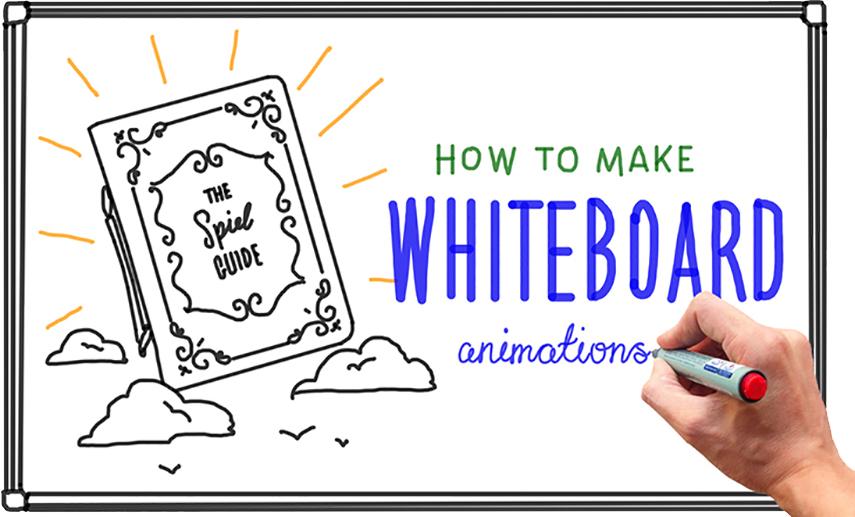Whiteboard animation has emerged as one of the most effective and engaging visual storytelling tools in recent years. Businesses, educators, and marketers use it to simplify complex concepts, captivate audiences, and drive engagement. But what exactly is whiteboard animation, and why is it so popular? This article explores everything you need to know about whiteboard animation, from its benefits and applications to how you can create one yourself.
What is Whiteboard Animation?
Whiteboard animation is a style of video that presents hand-drawn images and text on a white background, mimicking the experience of a person writing on a whiteboard. These animations are often accompanied by voiceovers and background music, making them an engaging and easy-to-understand format for communication. The process usually involves drawing illustrations in real-time or using software to simulate hand-drawn effects.
Benefits of Whiteboard Animation
Whiteboard animation has gained popularity due to its numerous advantages:
1. Enhances Engagement
Whiteboard animations captivate viewers by presenting information in a visually appealing and dynamic way. The combination of storytelling, visuals, and voiceover keeps audiences interested and engaged.
2. Improves Information Retention
Studies show that people retain more information when it is presented in a visual and narrative format. Whiteboard animations break down complex concepts into simple, easy-to-understand illustrations, making learning more effective.
3. Versatile and Cost-Effective
Unlike live-action videos, which require actors, locations, and extensive production costs, whiteboard animations are relatively inexpensive to create. They can be used for various purposes, such as marketing, education, training, and presentations.
4. Boosts Conversion Rates
Businesses use whiteboard animations to explain products and services effectively, leading to higher conversion rates. Explainer videos, in particular, help customers understand a product’s benefits and encourage them to take action.
5. Ideal for Social Media and Marketing
Whiteboard animation videos are easily shareable, making them great for social media marketing. They can quickly convey a message in an engaging and digestible format, increasing reach and visibility.
Applications of Whiteboard Animation
Whiteboard animations are widely used across different industries for various purposes:
1. Education and Training
Teachers, trainers, and educators use whiteboard animations to explain complex subjects in an engaging and simplified manner. These videos help students understand difficult concepts, making learning fun and effective.
2. Business and Marketing
Companies use whiteboard animation videos to promote products and services. They create explainer videos, customer testimonials, and brand stories to attract potential customers.
3. Healthcare and Medical Education
Medical professionals use whiteboard animation to explain diseases, treatments, and medical procedures to patients. These animations simplify complex medical jargon and make it easier for patients to understand healthcare information.
4. Non-Profit and Awareness Campaigns
Non-profit organizations leverage whiteboard animation to spread awareness about social issues, fundraising campaigns, and charitable causes.
5. Employee Training and Corporate Communication
Companies use whiteboard animation to train employees, explain workplace policies, and introduce new business strategies.
How to Create a Whiteboard Animation Video
Creating a whiteboard animation video requires planning, creativity, and the right tools. Here’s a step-by-step guide:
Step 1: Define Your Goal and Audience
- Determine the purpose of your video.
- Identify your target audience and tailor the content accordingly.
Step 2: Write a Compelling Script
- A well-structured script is essential for a successful whiteboard animation.
- Keep the language simple and engaging.
- Use storytelling techniques to make the content relatable.
Step 3: Create a Storyboard
- A storyboard is a visual representation of your script.
- Plan out the illustrations, scenes, and transitions to ensure smooth storytelling.
Step 4: Choose Whiteboard Animation Software
- Several tools are available for creating whiteboard animations, including:
- Doodly (User-friendly with drag-and-drop features)
- Videoscribe (Great for beginners with automated animation tools)
- Explaindio (Advanced features for professional videos)
- Vyond (Offers a mix of whiteboard and traditional animation)
Step 5: Record the Voiceover
- A clear and engaging voiceover enhances the effectiveness of your animation.
- You can record your own voice or hire a professional voice artist.
Step 6: Add Background Music and Sound Effects
- Background music makes the video more engaging and professional.
- Ensure that the music and sound effects complement the animation and do not overpower the narration.
Step 7: Animate and Edit
- Use animation software to bring your illustrations to life.
- Add transitions, effects, and timing adjustments to ensure smooth flow.
- Review and refine the video before finalizing.
Step 8: Publish and Promote
- Export the video in high quality and upload it to platforms like YouTube, social media, or your website.
- Use SEO techniques to optimize video titles, descriptions, and tags for better visibility.
- Share the video with your target audience through email marketing, blog posts, and social media campaigns.
Conclusion
Whiteboard animation is a powerful tool for storytelling, education, and marketing. Its ability to engage audiences, simplify complex information, and boost retention makes it a valuable asset for businesses and educators alike. With the right strategy and tools, anyone can create compelling whiteboard animation videos to effectively communicate their message. Whether you are an entrepreneur, teacher, or content creator, leveraging whiteboard animation can help you stand out and make a lasting impact.
 :
https://www.facebook.com/brinysoft/
:
https://www.facebook.com/brinysoft/












